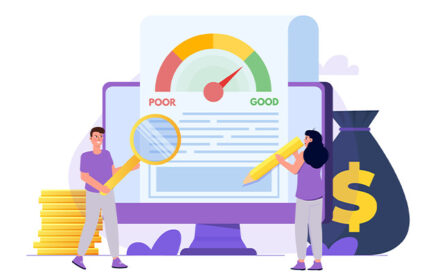< BACK TO INSIGHTS
Insight
Avoiding Financial Shock: Today’s Commercial Real Estate Is Dealing with a New Reality
The commercial real estate market is experiencing significant challenges, including rising build costs, declining demand for space, and increased refinancing risks, creating a complex landscape for investors and lenders. Pierre Buhler and Andrew Jones discuss the significant challenges currently facing the global commercial real estate market in this Scotsman Guide article. Read a preview of their article:
“The business and institutional ecosystem that encompasses commercial real estate — which includes everyone from originators, brokers, investors and lenders to renters, landlords and regulators — have dealt with plenty of boom-and-bust cycles. However, the changes we are experiencing right now appear more profound, leading many to ask, “What if this rebound does not follow the usual path?”
The COVID-19 pandemic produced a financial shock. More importantly, however, it also has changed human patterns and preferences for work, home, retail and leisure. Whether such changes are permanent has yet to be proven. But behavioral science studies tell us that people underestimate the impact of changes on their lives but overestimate the speed at which they will manifest. So, expect lasting change to emerge in these areas. The tectonic plates are still shifting.
Executives the world over are still working to get people back to the office. The truth, however, is that as leases come up, companies increasingly are taking the opportunity to cut real estate-related costs. With office space typically making up about 10% of a company’s expenditures, the chance to save money in this area becomes even more attractive as economic uncertainty means firms are introducing structured cost-cutting programs and challenging cost targets. When having to choose, most company executives would prefer to direct operational investments into technology over real estate.
Seismic events
Even in the past, traditional office-based businesses, which occupied much of the most expensive real estate assets in cities, only used a typical desk or meeting room for, say, 40 hours of a 168-hour week. Post-pandemic, this is often down by 40% to 24 hours, just 14% of the hours possible. This is both a waste of resources and an indicator of a deep drop in underlying value, and hence price risk.
Despite many positives, it is difficult to imagine that a focus on futuristic workplace design, flex-working solutions or new technology is going to bring back the demand for certain commercial real estate sectors such as office space anytime soon. This challenge represents a long-term strategic issue for the industry.
Businesses aligned to the major asset classes that have attracted investors in the past are in the middle of these major seismic events. Supply chain and energy inflation have driven up build and operation costs, underlying demand for space has dropped, interest rates have risen, and valuations are subsequently falling.
The outlook remains poor despite what optimistic agents might claim in their research. Lenders and investors are feeling nervous. Commercial construction starts nationwide have fallen considerably and government infrastructure spending is subdued.
Refinancing troubles
Bankers, once again, are set to play a major role defining the route out of this situation. Regardless of the cost of funds, a debt refinancing wall is approaching that must be addressed. In the U.S. alone, more than $2 trillion of outstanding commercial real estate loans will come due by 2027.
Pragmatism will mean many of the winners in the battle for refinancing will be those that already hold the assets. This will be true even if in the worst cases where the lenders are doing little more than “extending and pretending,” a term that refers to the strategy of commercial real estate lenders extending maturing loans with the hopes that market conditions will improve in the future. In Western economies, the social and financial appetite for large numbers of foreclosures is weak after the experiences of the financial crisis of 2007-09.
Holders of mid-grade assets (A-, B+) are most at risk. Top quality assets, especially those with strong sustainability credentials, will retain value, and many Class C assets are already in the hands of owners who do not rely on debt.
Read the full article HERE






